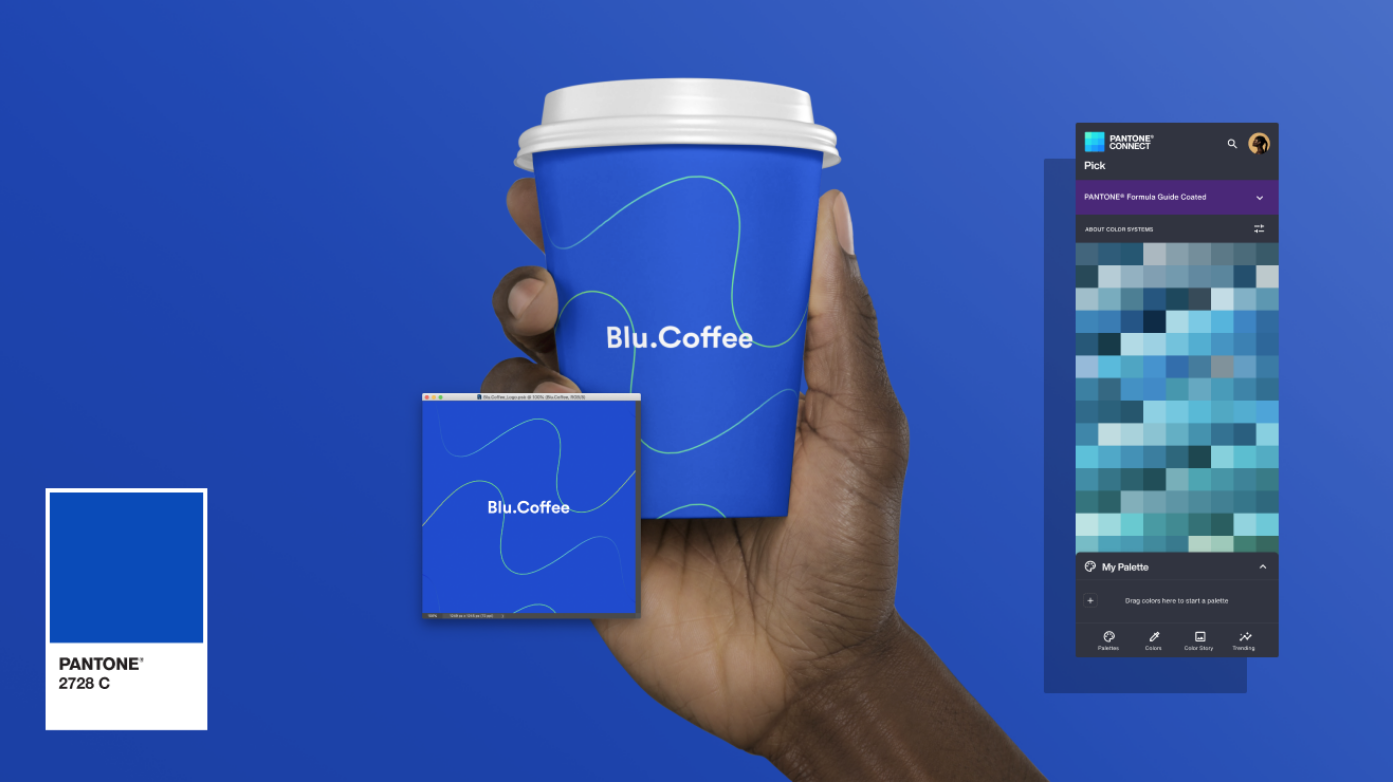How Pantone Colors Create Brand Identity
Brands are everywhere. Brands have become a part of everyday life, from our clothes to the coffee brand on our desks. So, how do you make your brand stand out? One way is through brand identity colors. The easiest way to create this is by using Pantone's color system, PMS (Pantone Matching System). This guide will offer you basic knowledge of Pantone colors and how they work with screen printing to mix ink colors for merch or apparel design!
Pantone colors are a standard for inks used in the printing industry, created by brand color expert Lawrence Herbert. The brand name is often associated with the Pantone Matching System, PMS. This system is a proprietary color space used in screen printing to mix specific colors.
Pantone Color System PMS
The Pantone Matching System is the brand's most well-known product. It consists of a library of over 1000 colors that you can use to create brand identity colors. Screen printing uses spot colors to refer to specific colors that you can achieve when ink is mixed to a precise formulation. A spot color is usually used for brand logos and other distinctive design elements for bold, vibrant colors.
When providing a PMS number for screen printing, be sure to use the index of coated colors, ex: PMS 495 C (the C is for coated!)
When to Choose a Pantone for Your Design
It is essential to choose brand identity colors that easily match using a Pantone. If you have brand colors that are specific and unique, then it would be a good idea to convert them into PMS numbers instead of using a standard ink color, which varies with each printer. Pantone colors are used to ensure that the colors on apparel or other printed materials accurately match what was seen on-screen.
You should choose Pantone colors for your design when:
You want to achieve a specific color outside of the RGB or CMYK color space.
Your apparel design has colors as part of the brand identity, but doesn't match a PMS.
If you want to ensure your apparel colors are a match to what was seen on-screen.
Understanding the difference between spot and process is incredibly important in setting color expectations from design intention to production and when transitioning from a computer screen to the printing press.
Converting HEX to a Pantone
HEX code is the standard way to represent colors on the web. It is a six-digit code consisting of numbers and letters representing RGB values. There is no direct way of converting HEX to a Pantone, but you can get as close as possible.
You can use the Hex to Pantone conversion tool, a web-based tool that allows you to convert HEX colors to their closest Pantone. This tool is not 100% accurate, but it is an excellent place to start.
Converting CMYK to a Pantone
CMYK is the acronym for Cyan, Magenta, Yellow, and Black. These are the four colors used in printing to create a wide range of colors. You can convert CMYK to a Pantone using the Pantone Coated Conversion tool.
The first step is to create a new document in Illustrator or Photoshop and select your object or image. Once you have it selected, go to Edit > Convert to Profile. In the window that pops up, select Pantone Coated as your profile. Then select your CMYK values and click OK. You will now see a color swatch next to the Pantone coated icon on the panel. This is the Pantone color that is closest to your CMYK value.
Converting RGB to a Pantone
RGB is an acronym for Red, Green, and Blue, which are the three colors making up all other colors on the web. You can convert RGB to a Pantone using the Pantone Uncoated Conversion tool.
The first step is to create a new document in Illustrator or Photoshop and fill it with white. Then, select the RGB colors you want to convert and use the Pantone Coated Conversion tool. This will give you a list of the closest Pantones. Depending on which one you like better or think looks best with your apparel design, you can choose any of them.
Learn More
Pantone is an integral part of graphic design, and if you want to produce high-quality merch, you must use the right colors. The PMS system ensures that your t-shirt and apparel accurately match your branding.
You will gain a competitive advantage by ensuring your apparel is a high-quality, professional product. Get a quote today to get started on your next project.

